

Marvel Comics Presents ran for 175 issues from 1988 until 1995. Each issue included four eight-page stories with typically two or three on-going features (and no ads). It spotlighted some of the leading creators of mainstream comics over a period of precipitous economic growth and even more rapid decline. Reading through it is an opportunity to revisit any number of weird aspects of 90s superhero comics. This blog is a primitive, oddly regimented, manifestly scattershot crawl through an often disappointing but occasionally splendid comic. All image copyrights are Marvel's. Issue credits linked below. Updated on Wednesdays.
Marvel Comics Presents #17: Late April 1989(1.15.20)
Credits: grandcomicsdatabase
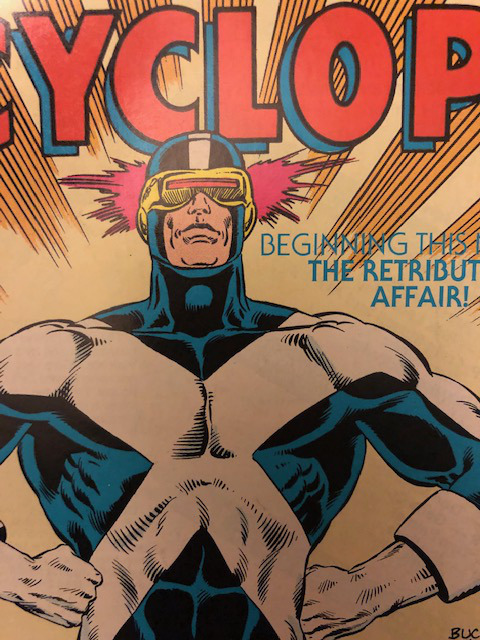
Rick Buckler has a two-panel X-Men cover with Cyclops in power pose and Colossus mid-action below. The former has some classic appeal, though it's marred by an incomprehensible optic blast effect. The latter and the rear cover are serviceable but each are eclipsed by a lovely Black Panther corner box. The letters feature returns. Sadly, nothing notable emerges aside from the promise of future appearances by tertiary characters like Sabra and Shamrock.
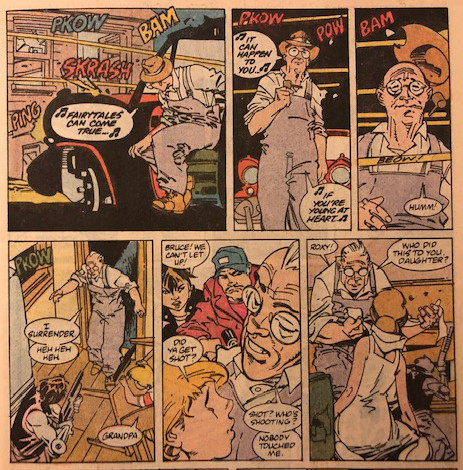
A. Colossus, "God's Country" [8/8]
A disappointing and strikingly abrupt conclusion to what was at various points a neat feature. Throughout, Leonardi and Russell managed a distinctive look that, viewed from high enough altitude, prefigured some of the manga influenced X-books that were, then, still some years down the line. The flaws with the feature are almost entirely narrative in nature. There's no clear explanation of how and why the showdown at the homestand ends or, really, why and how Grandpa died. The characterization of the family veered back and forth and the polemical character of the earlier installment simply vanished. In its place, we get some tepid remarks from Colossus bemoaning Russia but expressing his desire to return. With two more installments, this story might have tied up the various threads, but Leonardi and Russell's strongest moments were the simplest, least story-driven ones like Grandpa meandering through a gunfight.
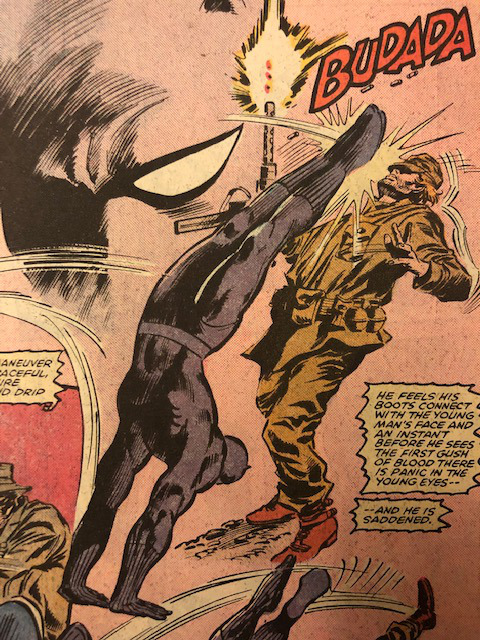
B. Black Panther, "Panther's Quest" [5/25]
McGregor continues to build out the narrative background of the characters with an installment focused on an Afrikanner soldier, Percy. (Twenty installments from now, this will seem totally pointless. *sigh*) The results are mixed, partly because of the barriers to sympathy with those complicit in apartheid but, at purely mechanical level, there's no clear work for them to do story-wise.
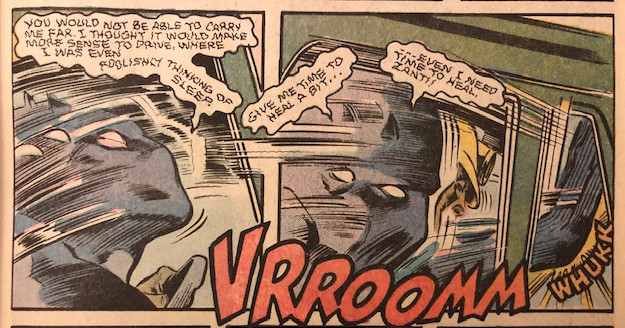
Colan's work continues to impress as layouts get wilder and, within various panels, there's an unabashed sense of play. Left to work around the variously dreadful lettering, we find an acrobat fight scene splash that equals the visual high points of "Panther's Rage." Fun stuff, but this is already starting to feel a bit long.
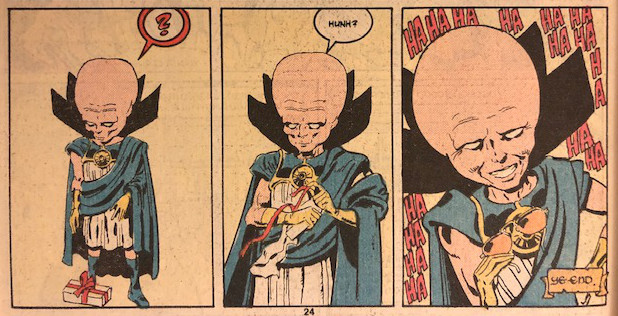
C. The Watcher, "Do You See What I See"
Given the release date of December 23rd (well off the Late April cover date), we're treated to a Christmas piece--one without any substantial narrative--featuring the Watcher. Lobdell returns and, for a zero calorie holiday yarn, with the Watcher and a one-off cosmic being, the Third Wise Man (who seems eerily similar to the Gardener), peeking in on Christmas events. The latter, thankfully (?), gets an inkling that the world is better off undestroyed.
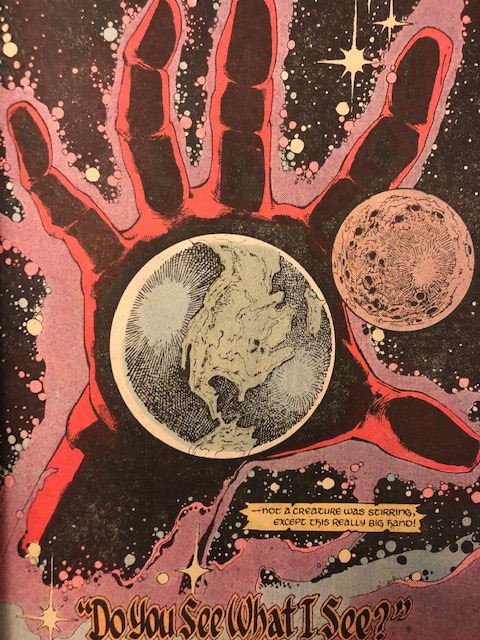
There's a concluding gag with Uatu being gifted a pair of sunglasses that was chortle inducing. More generally, it's nice to see Tom Sutton back in MCP after Man-Thing work even if he doesn't get the opportunity to do anything of note aside from a rather funky splash page of a giant hand around the world.
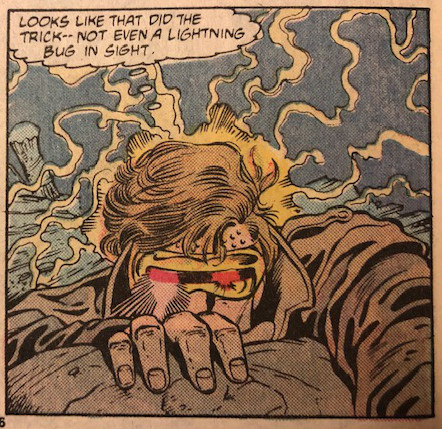
D. Cyclops, "The Retribution Affair"
The first installment of the third X-Men (continuing) feature in MCP. Cyclops arrives on Muir Island to discover ominous events in motion and is quickly set upon by a defense system. Only slightly eerily, upon waking the next day, he finds no evidence of anything fishy afoot. Bob Harras' focus on action crowds out the intended mystery feel including a possessed Moira McTaggart. (Continuity fun: a sticking point of this feature is Moira's non-mutant status, though it's ripe for a retcon.)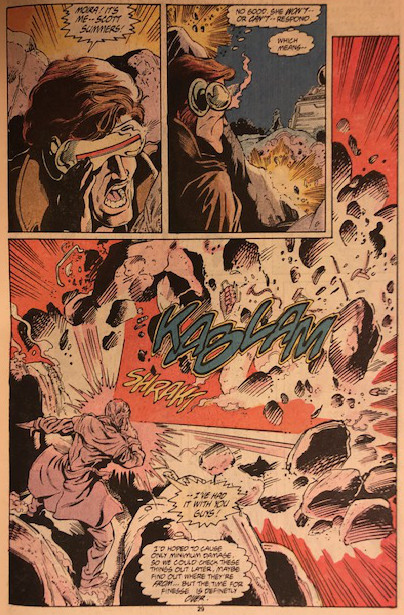
Ron Lim's work is beefy, fluid, but impressively clean. From the outset, it marks what feels like a bridge between Cockrum refinement and the Leifeld/McFarlane energy which is on the horizon.
Power Rankings: Black Panther (B-), Cyclops (B-), Colossus (B-), The Watcher (C+)